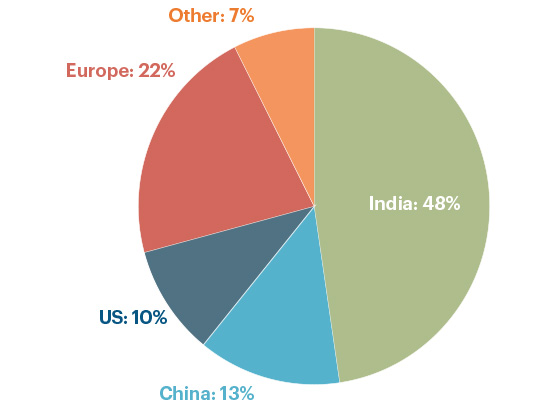It looks like you're new here. If you want to get involved, click one of these buttons!
Even if that’s the case, though, it’s hard to explain the huge valuation the market put on Tesla before the drop, or even its current value. After all, to be that valuable Tesla would have to generate huge profits, not just for a few years but in a way that could be expected to continue for many years to come.
Now, some technology companies have indeed been long-term moneymaking machines. Apple and Microsoft still top the list of the most profitable US corporations some four decades after the rise of personal computers.
But we more or less understand the durability of the dominance of Apple and Microsoft, and it’s hard to see how Tesla could ever achieve something similar, no matter how brilliant its leadership. Apple and Microsoft benefit from strong network externalities — loosely speaking, everyone uses their products because everyone else uses their products.
In the case of Microsoft, the traditional story has been that businesses continued to buy the company’s software, even when it was panned by many people in the tech world, because it was what they were already set up to use: Products like Word and Excel may not have been great, but everyone within a given company and in others it did business with was set up to use them, had IT departments that knew how to deal with them, and so on. These days Microsoft has a better reputation than it used to, but as far as I can tell its market strength still reflects comfort and corporate habit rather than a perception of excellence.
Apple’s story is different in the details — more about individual users than institutions, more about physical products than about software alone. And Apple was widely considered cool, which I don’t think Microsoft ever was. But at an economic level it’s similar. I can attest from personal experience that once you’re in the iPhone/iPad/MacBook ecosystem, you won’t give up on its convenience unless offered something a lot better.
Similar stories can be told about a few other companies, such as Amazon, with its distribution infrastructure.
The question is: Where are the powerful network externalities in the electric vehicle business?
Electric cars may well be the future of personal transportation. In fact, they had better be, since electrification of everything, powered by renewable energy, is the only plausible way to avoid climate catastrophe. But it’s hard to see what would give Tesla a long-term lock on the electric vehicle business.
I’m not talking about how great Teslas are or aren’t right now; I’m not a car enthusiast (I should have one of those bumper stickers that say, “My other car is also junk”), so I can’t judge. But the lesson from Apple and Microsoft is that to be extremely profitable in the long run, a tech company needs to establish a market position that holds up even when the time comes, as it always does, that people aren’t all that excited about its products
So what would make that happen for Tesla? You could imagine a world in which dedicated Tesla hookups were the only widely available charging stations, or in which Teslas were the only electric cars mechanics knew how to fix. But with major auto manufacturers moving into the electric vehicle business, the possibility of such a world has already vanished. In fact, I’d argue that the Inflation Reduction Act, with its strong incentives for electrification, will actually hurt Tesla. Why? Because it will quickly make electric cars so common that Teslas no longer seem special.
In short, electric vehicle production just doesn’t look like a network externality business.
LUV: Down 6% today. Down 23% YTD according to GoogleI have to believe this affects its stock too.


https://www.govinfo.gov/content/pkg/CHRG-108shrg93889/html/CHRG-108shrg93889.htmIn March [2004], Visa and MasterCard announced that they will not service Canadian mail order pharmacies because they have been under pressure from the FDA to cease their support of payment processing. They cited pressure from the FDA and have warned their member financial institutions to avoid so-called ``illegal'' transactions.

© 2015 Mutual Fund Observer. All rights reserved.
© 2015 Mutual Fund Observer. All rights reserved. Powered by Vanilla